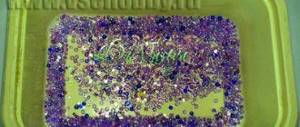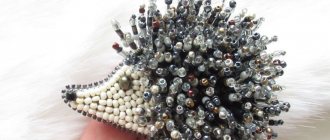DIY water rocket with remote control
Scott's Law It doesn't matter if something goes wrong. It might look good!
I once wrote a note about the design of a purchased water rocket. The simplicity of the device's design impressed me. The only trouble is that, according to the description, the rocket could be inflated to 7 atmospheres, but I was only able to “inflate” it to no more than 4 atmospheres; the standard foot pump did not extract more pressure. The catalyst for the new development was chance. My friend once gave me a lift from his dacha, and quite by accident, in the glove compartment of the car, I saw a rubber “boss” with a nipple. - And what is it? — Yes, a nipple for a tubeless tire... I immediately removed the nipple from the glove compartment. This is where the development of a homemade stand for launching a water rocket began. My next purchase was a quick connector for a watering hose. A bronze connector in a gardening store cost only 120 rubles. Aligning the nipple and connector turned out to be as easy as shelling pears. Having cut off the “head” from the nipple, I hammered it into the connector. The nipple entered with tension, the tightness was ensured. The main element of the launch pad was ready. Back in March I started preparing for the high pressure rocket project. For my birthday, I ordered a gift for my employees at work - an electric car pump "Berkut", which, according to the description, produced a pressure of up to 12 atmospheres. According to the magazine "Behind the wheel", "Berkut" was the best car pump. After my birthday, the employees constantly mocked me for a long time, asking me the question: “Why do you need a car pump if you don’t have a car?” At first I wanted to make the launch pad entirely from duralumin; I bought a 3 mm thick duralumin sheet at the Mitinsky market. But when I assembled the launch stand, it turned out that there was a mistake with the dimensions. The hose from the Berkut did not fit. The design had to be redone, since all the duralumin had already been cut, and centimeter plywood was used. The upper platform remained aluminum, and I cut everything else out of plywood in a day. The base was used with a piece of laminated chipboard approximately 40 by 40 cm; I came across such pieces throughout the dacha. It’s a necessary thing, you must admit, for ten years I’ve wanted to place them somewhere. It was not difficult to twist all the parts together. I suffered a little while installing the servo, which was supposed to pull the “string” on command from the control panel. A plywood clamp was cut out under it, which was screwed to the middle partition of the stand on metal corners. I connected the servo to the start valve with bicycle cables.
Painting the launch stand
I have known since childhood that plywood is afraid of water. This is where the need arose to cover the launch stand with something. Which varnish should I choose? For about twenty-five years, I haven’t used varnishes at all; I’ve successfully forgotten everything I knew about them. A work colleague who served in the navy and knew everything about it immediately advised me to coat the plywood with marine varnish. Well, yes, I thought: “If he served in the tank forces, then I would have to cover the plywood exclusively with tank varnish.” But he listened to the advice; the sailor would not offend his colleague. In the Tushino Builder store, no one knew about ship varnish, but the saleswoman suggested “Yacht Varnish,” which can be used to coat not ships, but only yachts. A large (by modellers' standards) 0.75 liter can of transparent varnish cost 800 rubles. But I wanted to buy a dark varnish, the issue was resolved in five minutes. “I’ll make you any color,” the saleswoman said, showing me the palette. I chose a darker color (toner No. 3450). “It’ll be ready in five minutes, you’ll pay another 85 rubles.” At the dacha, I first coated a piece of plywood with one layer of varnish, when I laid the scrap down to dry, then I covered the scrap of board... I “painted” the prototypes using an ordinary construction brush for 20 re. Only one circumstance spoiled the holiday of high technology for me - the brush did not want to be washed with water. I had to read the instructions on the can. From it I learned a lot of new things: alkyd-urethane varnish, the first layer must be dried for 4 hours, and then we apply the second, then dry the workpiece for a couple of days before coating with the third layer. The jar should have been enough for 10 square meters. Then I immediately wanted to varnish the toilet at the dacha. After all, if you cover it well, it can last for fifty years. You can use a brush called “White Spirit”.
Brass connector and nipple for tubeless tire.
Cut off the “head” of the nipple.
The nipple fits perfectly into the connector with interference.
The brass corner was soldered to the connector with ordinary solder using a gas torch, although one could try to remember where the hundred-watt soldering iron was.
Two ears are soldered to the top and bottom of the connector.
The upper part of the launch stand is made of 3 mm duralumin; the launch connector is secured with a pair of M4 screws.
The side panels of the launch stand were leveled with a rasp.
Holes for M4 screws
Preliminary fitting of corners.
The stand is assembled. Not all the holes for the screws lined up; they had to be drilled out here and there to get the screws in.
The stand is assembled using M4 screws with a large head.
The drive to the “trigger head” used two bicycle cables, purchased at the “Sport” store for 60 rubles. At first I made a bold attempt to bite off the cable with ordinary side cutters, but it did not budge. I had to start a grinder and sawing off the cables to the required size turned out to be a matter of seconds. The structure is attached to the base with ordinary self-tapping screws. Holes are drilled in the brass “ears” (diameter 2mm), and the same holes are drilled in the duralumin base. A cable is threaded through them.
After fitting, the starting table was disassembled and the plywood parts were coated with “Yacht Varnish” in three layers.
The basis of the trigger mechanism is a powerful 50 gram servo, which develops a force of up to 10 kg. As it turned out later, the force turned out to be excessive; it was easy to install a servo with a force of 2-3 kg. The servo is screwed with standard self-tapping screws to a plywood panel, which is screwed at the corners under the middle partition of the launch table.
Bicycle cables are attached to the “ears” soldered to the quick connector. They are threaded into the holes of the duralumin plate. The plate is fixed at the bottom with two bushings and screws. A rod of one and a half millimeter steel wire is threaded through the central hole, which connects the plate to the servo.
L-1 rocket (Lipton-1)
The rocket was already made using proven technology. The main element was a Lipton tea bottle with a capacity of 1.25 liters. The rocket body is made of ordinary Whatman paper - A4.
Some innovations have been made to the technology of wrapping Whatman paper onto a bottle. The sheet was only long enough to wrap the bottle once. So I glued the first sleeve from whatman paper, when the glue had dried, I screwed the second one onto the first sleeve, glued the sleeves together without gluing them together, and on top of the second - the third. I glued it with va, it dries much faster than PVA. The rocket body was assembled from 3 cartridges; the cartridges were coated with “Titan” and inserted into each other. This operation must be done very quickly. I was able to line up the sleeves properly the second time. The first building, as in the saying about pancakes, went lumpy and had to be thrown away.
The stabilizers were made from double ceiling tiles. I glued two tiles together, cut them out, and sanded them.
The stabilizers are glued to the bottom of the rocket; in addition, a triangular “plinth” is glued along the entire length at the junction of the stabilizer with the body. The rocket fairing was made using technology that I spotted in Popular Mechanics. The top part of a larger bottle (1.75 l) is cut off, the neck is cut off, and the resulting hole is plugged with a tennis ball.
The tennis ball was glued with Secunda superglue, and the fairing itself to the body with Titanium. The bottle is not secured in any way to the body; it fits in with tension and is held there.
I painted the rocket with acrylic paint for bench models.
Making a rocket nozzle. At the Young Gardener store I purchased a pair of plastic male-male adapters for watering. Such an adapter is clamped in a vice and cut into two parts for a dividing pad.
We drill a hole in the bottle cap and sand the adapter pad. Now let's try to glue these two plastic parts together. From the beginning I used glue (Sofort Kleber) with an incomprehensible name, an analogue of “Supermoment” *. The connection, after drying, did not pass the test drive; by applying significant tensile force, I managed to tear the nozzle off the cover. Second try.
The domestic glue “Contact” was used, which showed the best results. I was unable to tear the structure apart with my hands. Either the first glue was not fresh, or the second time I didn’t try very hard to break it.
Preparing for launch
The launcher's servo machine was connected to a conventional receiver for model aircraft; the receiver was connected to a lithium polymer battery through a regulator. I put this entire assembly under a glass from a plastic bottle. To further isolate the electronics from water, I glued the glass to the base of the plastic table. First flights The first launches were made from a summer cottage at a slight angle towards a neighboring wasteland.
The L-1 rocket is filled with 400 grams of water and installed on the launch pad. A pump is connected to the starting valve; the pump is powered by a lead-acid battery for the UPS.
At the first starts, global disappointment awaited me. When the pressure gauge showed 5 atmospheres, the rocket randomly flew off the launch stand. Couldn't hold her. At 4 atmospheres the system worked normally, the launch was carried out according to plan, upon command from the control panel.
At this pressure, the rocket rose only no more than 30 meters. I filed the connector a little with a file. After this, random disruptions from the stand stopped.
Pumped it up to 7-8 atmospheres. The rocket rose three meters above the ground... Then it decided to turn to the right. The lifting height is no more than 15 meters, the range is about 100 m.
A “terrible” crash after a crooked launch, from hitting hard ground, one stabilizer broke, and the fairing was crippled.
The repair took about ten to fifteen minutes. Photo by the author PS: The fashion model is of age and does not object to the public use of her image. Not a single model was harmed during the launches.
We run in the chassis for mounting the rocket.
Modeling the motion of a hydropneumatic rocket
MBOU Lyceum No. 38
Shikov A.P.
Scientific supervisor: Mikhail Aleksandrovich Balakin (Teacher of Physics and Astronomy)
Section of Aviation and Flight Technology, Space, Earth and Ocean Sciences
Target:
- Create a model of a jet-powered rocket and launcher for conducting an experiment.
- Simulate the movement of a jet-propelled hydropneumatic rocket using the PascalABC.NET programming environment
Relevance:
The relevance of the study of jet propulsion in our time can hardly be questioned, since it is our country that is strong in this industry, and we want it to remain so for as long as possible.
Job:
When modeling the reactive motion of a body, it is necessary to take into account many factors that influence the flight of a real rocket and are usually “omitted” in a school physics course. Thus, the resistance of the environment cannot be neglected, since at high speeds the force of total aerodynamic drag, based on the formula for calculating resistance (1)
(1) F c = cxp V 2 2 S
increases quadratically. It is imperative to understand, as correctly as possible, the process of expiration of the working substance, since the rate of release of the “fuel” can vary greatly as the substance is consumed. We tried to solve these and other problems during the work.
The ultimate goal of the simulation is to match as accurately as possible the calculated dependence of the rocket coordinates on time with the same dependence obtained experimentally (during a rocket launch).
Methods:
Mathematical modeling of the rocket's motion was based on the numerical solution of the equations of motion. During flight, the rocket was affected by engine thrust (reactive force), air resistance and gravity. All three forces changed in magnitude during the flight, due to changes in the mass of the rocket and its speed.
To calculate the rocket's motion, the Euler algorithm for numerical integration of Newton's equations was chosen. The choice of this algorithm is due to the expected “smoothness” of the functions, which allows the use of a constant integration step. The program was written in Pascal ABC.
Brief description of the principle of operation of the rocket:
- Water is poured into the rocket (1/3 Volume)
- The launch pad and rocket are brought into a horizontal position.
- Pressure is injected into the rocket (6~5 atm).
- When the shutter is released, the launch pad “releases” the rocket under pressure, and water under pressure comes out, resulting in a reactive force.
The main algorithm of the simulation program:
begin
fc:=kc*((1.2/2))*v*v*0.004; //Calculate air resistance force
a:=(u*km*g-fc)/m; // Calculate acceleration
u:=u-((2/5)*((um/0.04)*dt));//Calculation of water exit rate
v:=v+a*dt; //Calculate body speed
y:=y+v*dt; //Calculate body coordinates
t:=t+dt*n;
m:=mk*dt;
end ; // Calculate rocket mass
Results: The work carried out showed that we correctly understand the nature of the processes occurring during the movement of a rocket with a water engine. We also created a program that simulates the movement of a hydropneumatic rocket.
"Meteors" and "Rockets" will return to the rivers of Russia
By 2021, the first high-speed hydrofoil vessel (HFV) of a new generation will appear on the waters of Russia. At the same time, different models of such ships will be created separately for lake-river, sea and ocean routes. Sergey Italiantsev, general director of the Central Clinical Hospital named after. R.E. Alekseeva.
The main advantage of the SPK over any other watercraft is speed: a hydrofoil vessel rises above the surface of the water, significantly reducing the friction of the ship's bottom on its surface, which allows the SPK to reach a speed 3-4 times higher than that of any other representative of water transport. At the same time, sea and ocean SPCs, called “Cyclone”, will be more resistant to sea motion than conventional cruise ships.
At the moment, the only representative of the domestic SPK fleet on Russian rivers and reservoirs are the legendary Meteors. But their service life is practically exhausted, and these machines are already outdated, both from a technical point of view and from the standpoint of comfortable movement on such a water vehicle.
Today, specialists from the Alekseev Central Design Bureau are developing a replacement for Meteora. On river routes up to four hundred kilometers long these will be high-speed boats with the design name “Valdai-45R”, and on main routes up to six hundred kilometers long - the same name SPK “Meteor V2”. The latter will be able to cover long distances by water, for example, the Volga distance between Nizhny Novgorod and Ulyanovsk, and in the future between Nizhny and Saratov, and Volgograd. At the same time, it is assumed that the new generation Meteors will tear up the water surface not only of the Mother Volga, but of large rivers and lakes in the north-west of the country, in the Trans-Urals and Primorye.
The marine SPK will be high-speed vessels of the Comet 120M project. The lead vessel of this project was launched and went into operation on the Black Sea this summer. Two more ships of this class will be completed by next year. This work is being carried out as part of the revival of the Russian hydrofoil fleet, which will transport passengers on short-haul domestic flights, and will also serve passenger traffic on sea and ocean routes both within the country and abroad.
Ocean-going “Cyclones” will be twice as spacious and powerful as river “Rockets”: they will carry up to three hundred passengers and cover distances of about seven hundred miles. Moreover, all new SPKs will be equipped with two M70FRU gas turbine engines, the latest power plants of the latest generation. Naturally, the interiors of new Russian ships will be designed and equipped according to the latest design trends in world shipbuilding using composite materials and comfortable aviation-type seats, a ship's air conditioning system, a wireless network and other modern technological innovations.
Moreover, a unique system of retractable front wing will be developed for river boats so that these boats can freely land on shores that are not equipped with berths or floating landing stages. They plan to install such a system on a test sample next year, so that by 2020-2021. It was possible to put into mass production models with fixed and split hydrofoils.











